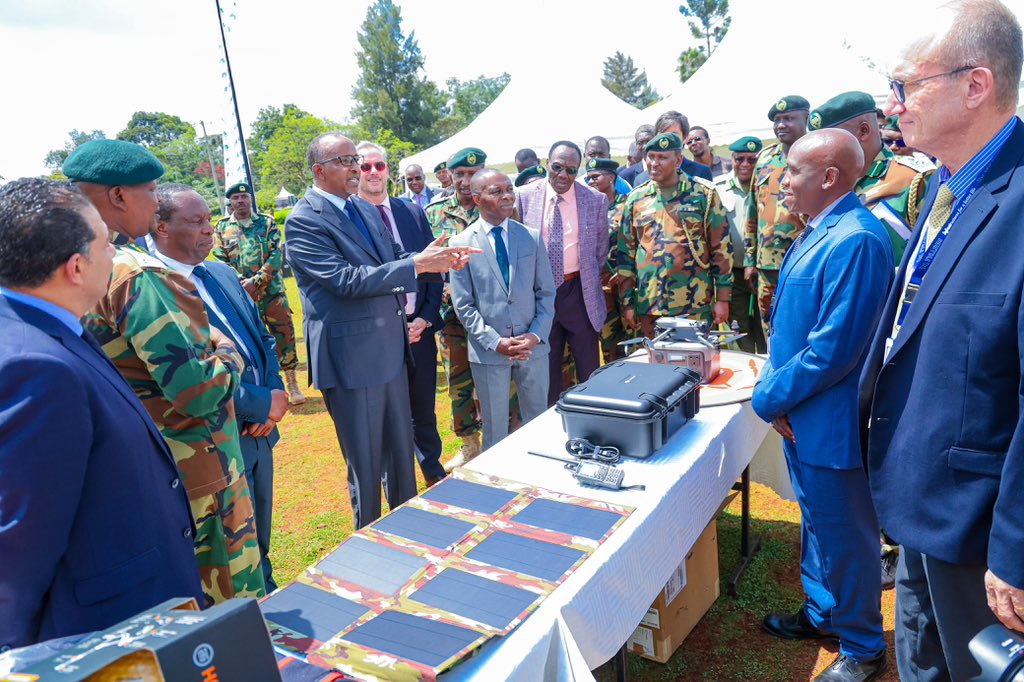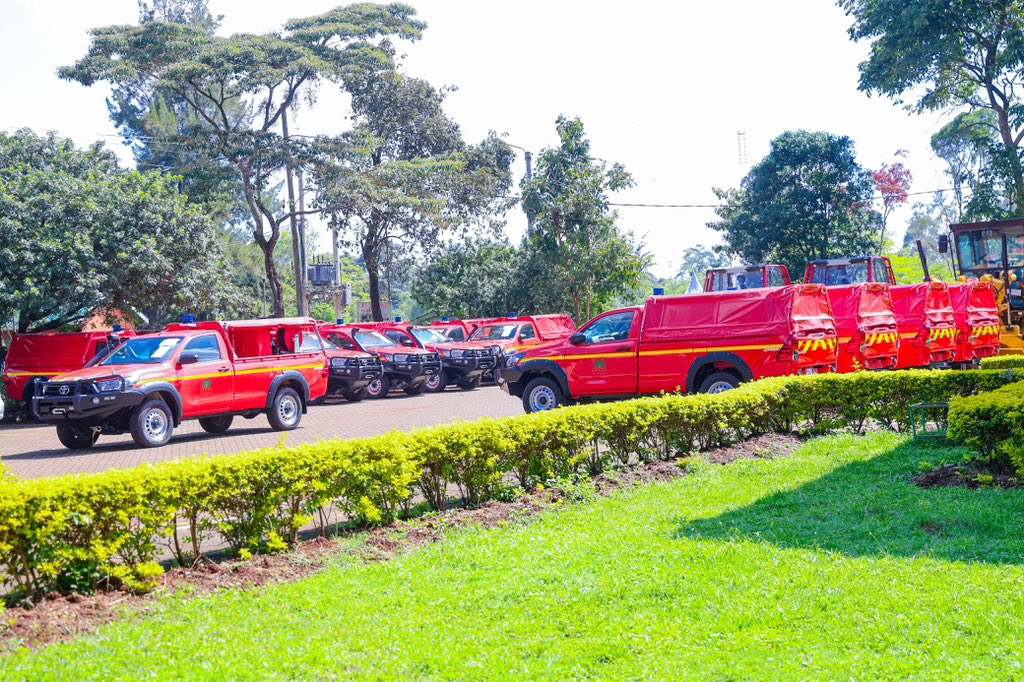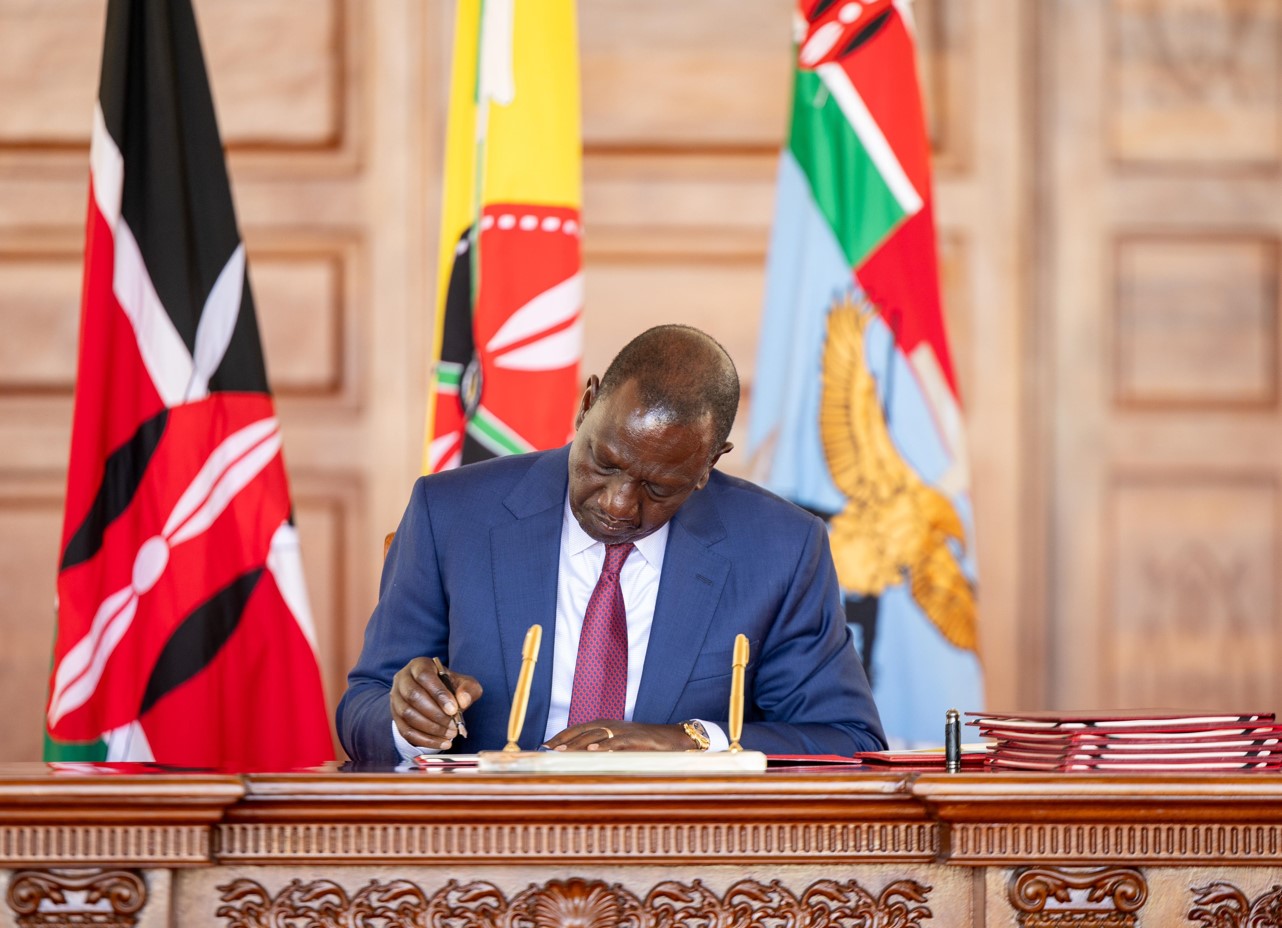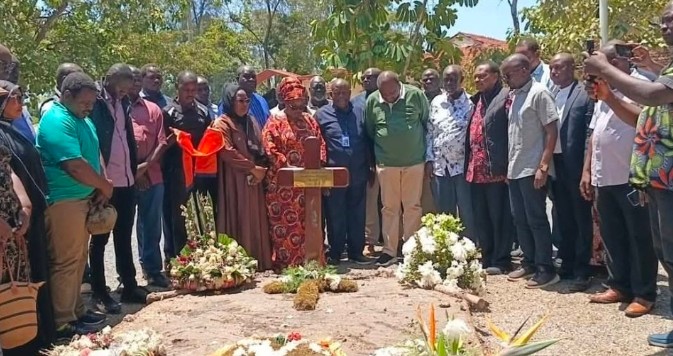Kenya launches Sh2.8 billion forest fire detection system to combat fires

The initiative also includes drones, advanced firefighting vehicles, personal protective equipment (PPE), and specialised training for response teams.
The government has launched a Sh2.8 billion project to help tackle forest fires. The Kenya Forest Service (KFS) Digital Radio Network and Early Fire Video Detection on First Call is set to help in tackling forest fires by detecting smoke from whichever part of the forest and immediately signalling at the command centre whereafter decisive response is taken.
The state-of-the-art system, launched by Environment Cabinet Secretary Aden Duale at the KFS headquarters in Nairobi, features satellite towers fitted with cameras capable of detecting smoke and transmitting real-time visual data with precise coordinates to the command centre.
More To Read
- President Ruto launches nationwide drive to plant 2 billion tree seedlings each year
- Lawyer moves to court to bar Kenya Forest Service from managing City Park
- Court summons ferry manager Bakari Gowa over 2019 Likoni tragedy
- KFS warns timber, charcoal traders over forged transport documents
- Wildfires burn over 30 per cent of Etosha National Park in Namibia
- Sandalwood consignment worth Sh7.8 million destroyed in Maralal
From there, trained KFS personnel deploy firefighting teams and vehicles equipped with the necessary tools to contain and extinguish fires.
Duale highlighted that the project aligns with Kenya’s goal of planting 15 billion trees by 2032, stressing the importance of safeguarding forests against escalating climate risks such as prolonged droughts, erratic rainfall, and rising temperatures.
“Kenya faces escalating climate change impacts; prolonged droughts, erratic rainfall, and rising temperatures heightening forest fire risks. These fires threaten biodiversity, human lives, and livelihoods, making proactive management essential,” he said.
The initiative also includes drones, advanced firefighting vehicles, personal protective equipment (PPE), and specialised training for response teams.
 Some of the advanced firefighting vehicles unveiled. (X/Aden Duale)
Some of the advanced firefighting vehicles unveiled. (X/Aden Duale)
Satellite towers have been strategically placed in key forest areas such as the Aberdare and Karura forests, enhancing fire detection and mitigation efforts nationwide.
The project, supported by the French government, introduces cutting-edge technologies for fire detection, surveillance, and suppression.
Duale commended the collaboration, describing it as a testament to the power of technology and international partnerships in addressing climate challenges.
“The partnership between France and Kenya has spanned decades, yielding impactful projects such as the Mikoko mangrove restoration, Lake Victoria Ecosystem Management, and the Kenya Climate-Smart Agriculture Project. Today’s initiative further solidifies our shared commitment to forest protection, climate action, and sustainable development,” he said.
French Secretary of State for Francophonie and International Partnerships Thani Mohamed Soilihi lauded Kenya’s efforts in achieving the 30 per cent tree cover target.
The initiative represents a significant step in Kenya’s fight against forest fires, ensuring the protection of its forests and the biodiversity they support.
Forest fires have become a growing concern for environmentalists, with numerous incidents reported annually, resulting in the loss of vast biodiversity and tree cover.
In February 2023, a wildfire in Aberdare National Park destroyed 40,000 hectares, with authorities attributing the cause to illegal human activity. The fire was attributed to illegal human activity.
Similarly, in February 2022, over 1,359 acres of the Aberdare Ranges were razed by forest fires, further highlighting the increasing frequency of such disasters.
Data from Global Forest Watch, a forest monitoring organisation, also revealed that Kenya lost 1.98kha of tree cover to wildfires between 2001 and 2021.
The group attributed the rising number of fires to climate change, deforestation, and forest degradation.
"Climate change and forest degradation and fragmentation have led to more fire-prone conditions globally. With hotter and drier conditions, fires—either ignited by humans or lightning—are more likely to burn over larger areas and at higher temperatures. Forests degraded by logging and disease, and fragmented by deforestation, are also more susceptible to fire," Global Forest Watch noted.
While agriculture remained the leading cause of forest cover loss in Kenya, the data showed 2017 recorded the highest tree cover loss due to fires, with 178ha destroyed.
The organisation also highlighted that Kenya's peak fire season typically begins in mid-January and lasts approximately 13 weeks.
Between April 20, 2020, and April 17, 2023, Kenya recorded 10,050 fire alerts. Of these, 780 fire alerts occurred between April 18, 2022, and April 17, 2023, marking an increase compared to previous years since 2012.
"In Kenya, 34kha of land has burned so far in 2022. This total is normal compared to previous years, but the most fires recorded in a year occurred in 2012, with 1.1Mha," Global Forest Watch said.
Top Stories Today













































